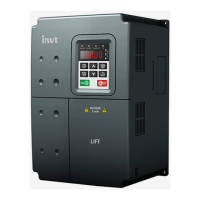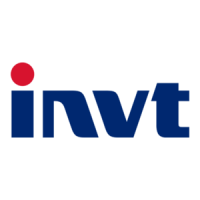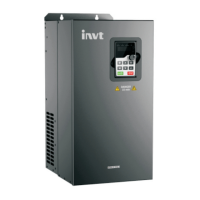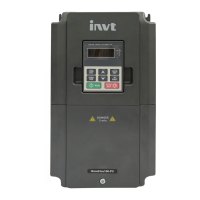
Do you have a question about the INVT GD300L-1R5G-S2 and is the answer not in the manual?
| Power | 1.5 kW |
|---|---|
| Rated Power | 1.5 kW |
| Frequency Range | 0-400 Hz |
| Protection Level | IP20 |
| Cooling Method | Air cooling |
| Communication Interface | RS485 |
| Output Current | 7.0A |
| Operating Temperature | -10℃~50℃ |
| Storage Temperature | -20℃~60℃ |
| Humidity | 5% to 95% (non-condensing) |
| Altitude | Below 1000 m |
Provides essential guidelines for safe operation and handling of the inverter.
Safety precautions to follow during the initial setup and operation phases.
Essential initial setup and configuration steps for the inverter.
Details the technical specifications for power input, output, and control features.
Lists detailed electrical ratings, including power, current, and voltage.
Covers requirements for the physical mounting and environment.
Specifies conditions for optimal inverter performance regarding temperature, humidity, etc.
Covers all aspects of connecting the inverter to power and control systems.
Details on connecting the main power input and output terminals.
Details on connecting control signals, I/O, and expansion cards.
Step-by-step instructions for changing inverter parameters.
Parameters for fundamental inverter control settings.
Parameters for managing motor start and stop sequences.
Parameters for Voltage/Frequency control methods.
Parameters specific to motor identification and properties.
Parameters for advanced vector control modes.
Configuration of digital and analog input signals.
Configuration of digital and analog output signals.
Parameters for S-curve acceleration/deceleration profiles.
Settings for inverter and motor protection functions.
Specific wiring diagrams for integrating the inverter with a lift controller.
Essential initial parameters that must be configured for operation.
Procedures for testing and fine-tuning the inverter's performance.
Procedure for optimizing inverter performance based on motor characteristics.
Fine-tuning acceleration/deceleration curves for smooth lift movement.
Tuning parameters to enhance ride comfort during startup and stops.
Ensuring precise floor stopping and positioning accuracy.
Configuration for controlling speed using multiple step inputs.
Procedure for operating the inverter during power loss or emergencies.
Parameters for controlling movement based on calculated distance.
A comprehensive list of inverter faults and their corresponding causes and solutions.
Troubleshooting guide for common inverter operational issues.
Diagnosing issues when the motor fails to operate.
Troubleshooting the causes of motor vibration or abnormal noise.
Diagnosing and resolving overvoltage conditions affecting the inverter.
Diagnosing and resolving undervoltage conditions affecting the inverter.
Troubleshooting causes of abnormal motor heating.
Diagnosing and resolving inverter overheating issues.
Troubleshooting motor stalling during acceleration.
Diagnosing and resolving overcurrent conditions affecting the inverter.
Introduction to the Modbus communication standard and its application.
Explanation of the RTU transmission mode for Modbus communication.
Explanation of common Modbus RTU command codes and data structures.
Troubleshooting common issues related to communication failures.
Details on the PG card used with asynchronous motors.
Technical specifications and models for the asynchronous PG card.
Details on the PG card used with synchronous motors.
Information on the Safe Torque Off (STO) function.
Details inverter capacity, voltage, and current ratings.
Information on selecting and installing braking components.











